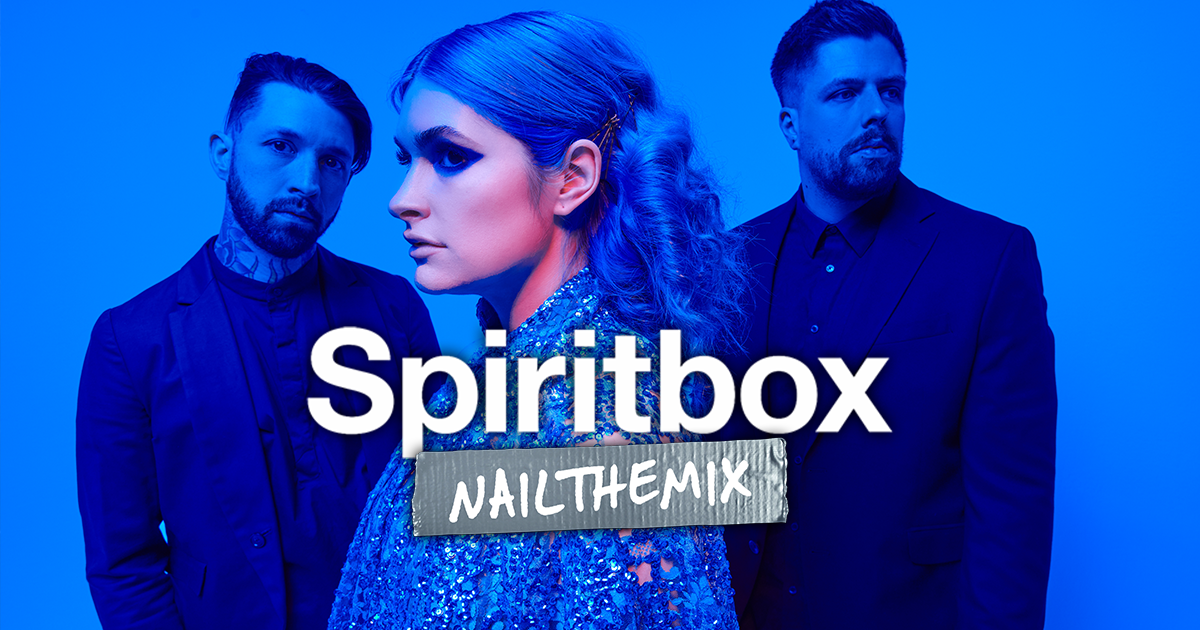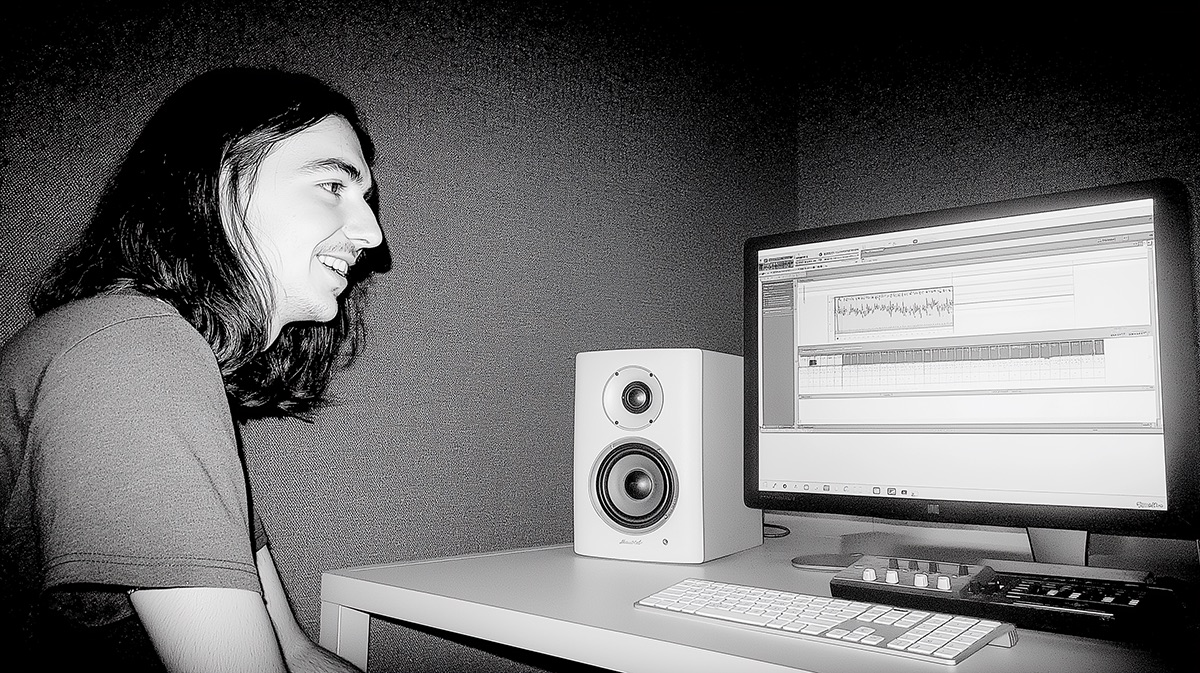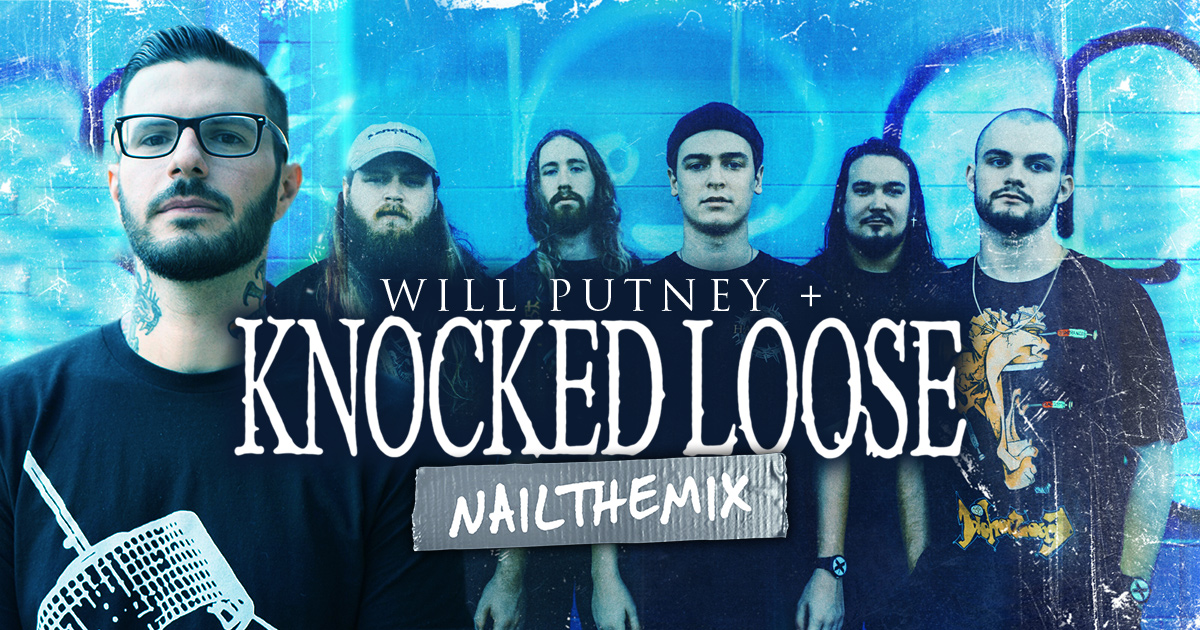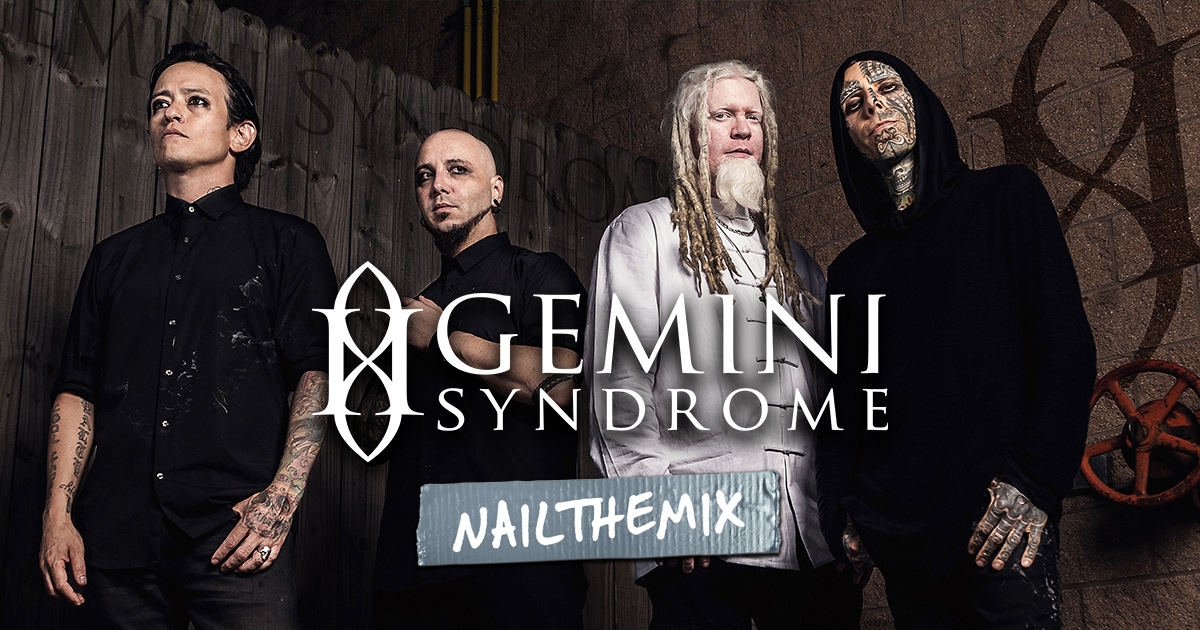
What is Distortion & How Metal Producers Master It
Nail The Mix Staff
Distortion. For some, it’s the sound of a blown speaker, a digital over, or just plain noise. But for us in the metal world, distortion is the lifeblood of our sound. It’s the searing aggression in a Meshuggah riff, the punchy grit on a Gojira snare, and the subtle warmth that makes a mix feel “alive.” In today’s metal landscape, where production standards are sky-high even for unsigned bands, understanding and mastering distortion isn’t just a luxury—it’s a necessity.
Forget thinking of distortion as just a guitar thing. It’s a versatile, often underrated tool that, when wielded correctly, can elevate your mixes from demo-quality to release-ready. Let’s dive into what distortion actually is and how you can harness its power.
Distortion Isn't Always a Four-Letter Word
At its core, audio distortion is any process that alters the timbre of a sound by adding overtones or harmonics, or by modifying the waveform in a way that wasn’t present in the original signal. Many producers, especially when starting out, associate "distortion" with something inherently bad. But the truth is, many of the sonic characteristics we love, especially the coveted "analog sound," are forms of distortion.
The "Good" Distortion We Crave: Harmonic Enhancement
This is the kind of distortion that makes things sound richer, warmer, fatter, and more exciting. It’s often about adding harmonically related content to the original signal.
- Tube Saturation: Think of the classic sound of a Peavey 5150/6505 or a Marshall JCM800 pushed hard. Those tubes aren't just getting louder; they're adding a complex blend of even and odd harmonics that create that thick, aggressive guitar tone. You can also get this vibe with plugins like Soundtoys Decapitator (try the "A" or "E" styles for subtle warmth on vocals or bass) or by driving virtual preamps in emulations like the Kush Audio Omega N (Neve-ish) or Omega A (API-ish).
- Tape Saturation: Running signals through analog tape (or realistic tape emulations like the UAD Studer A800, Waves Kramer Master Tape, or Softube Tape) introduces subtle compression, a gentle roll-off of extreme highs and lows, and, crucially, harmonic distortion. This can glue tracks together, add warmth, and give a pleasant "sheen." Try it on your drum bus or even the master bus with conservative settings.
- Transformer Saturation: The input and output transformers in classic gear (like Neve 1073 preamps or API consoles) saturate when pushed, adding a characteristic weight and color. Many console emulation plugins (Waves NLS, Slate Digital VCC) model this behavior.
- Analog Compression Artifacts: Driving an analog compressor (or a good emulation like a UAD 1176 or Waves CLA-76) hard doesn’t just control dynamics; it can introduce pleasing distortion that adds punch and character, especially on drums or aggressive vocals. For more on this, check out our metal compression secrets.
- Vinyl Warmth: While not always "distortion" in the aggressive sense, the subtle coloration and warmth from vinyl records (which can be emulated with plugins like iZotope Vinyl) is another example of a desirable sonic alteration.
These "good" distortions often add even-order harmonics (octaves, perfect fifths above octaves) which are generally perceived as musical, or a smooth blend of odd-order harmonics that add bite and presence without harshness.
The "Bad" Distortion We Fight: Unwanted Noise and Harshness
This is the stuff that makes mixes sound amateur, harsh, or just plain broken.
- Digital Clipping: This is enemy number one. When a signal exceeds 0dBFS in your DAW or digital processor, it gets its waveform tops brutally chopped off. This creates a nasty, harsh swarm of inharmonic overtones and aliasing artifacts. Always watch your levels!
- Unwanted Intermodulation Distortion (IMD): This occurs when multiple frequencies interact within a non-linear system (like a cheap distortion pedal or an overloaded circuit) and create new frequencies that are not harmonically related to the originals. It sounds dissonant and muddy.
- Speaker Breakup (Unintentional): While crucial for guitar tones, if your studio monitors are distorting because you're pushing them too hard, you're not hearing your mix accurately.
- Fizz and Harshness: This often comes from excessive high-frequency distortion, making guitars sound like a swarm of angry bees or cymbals sound like trash can lids. This is where surgical EQ, which we discuss in our EQ strategies guide, becomes critical.
Distortion as a Creative Weapon in Modern Metal
Okay, enough theory. Let’s talk about how modern metal producers intentionally use distortion to sculpt those massive, polished sounds demanded by today's scene.
Guitars: The Heart of the Beast
This is the most obvious application, but there’s nuance here, especially with modern low tunings.
- Amp Distortion: The foundation. Amps like the Peavey 5150/6505, Mesa Boogie Dual Rectifier, or modded Marshalls are staples. Amp sims have come an insanely long way too. Neural DSP (Archetype Gojira, Nolly, Plini, etc.), STL ToneHub, and Positive Grid BIAS FX offer incredible control and tone in the box.
- Overdrive Pedals: Not just for adding more gain, but for shaping the gain. An Ibanez TS9 or Maxon OD808 with the Drive at 0-2, Tone around noon, and Level cranked, slammed into an already high-gain amp (real or virtual), tightens the low-end and pushes the mids for that articulate chug. This is vital for 7, 8, or even 9-string guitars to keep them from turning into mud.
- Fuzz & Other Distortion Pedals: While a full-on fuzz like an Electro-Harmonix Big Muff Pi might be too loose for main rhythms in many modern metal styles, it can be awesome for layers, leads, or specific industrial textures. Pedals like the ProCo RAT or the infamous Boss HM-2 (for that Swedish chainsaw sound) have their place, as do modern high-gain pedals like the Friedman BE-OD.
- Low Tunings & Clarity: When you're tuning down to Drop G or lower, distortion helps generate upper harmonics that allow the ear to perceive the fundamental pitch more clearly. Without it, super low notes can sound like undefined rumbles. The trick is balancing this with EQ to prevent a woofy, indistinct mess.
Bass: Cutting Through the Wall of Guitars
In modern metal, bass isn’t just about holding down the root; it’s an aggressive, audible force.
- Why Distort Bass? To help it cut through dense guitar mixes, add upper-midrange grind that complements the guitars, and create a cohesive, powerful low-end.
- Parallel Distortion: This is HUGE. Blend a clean, full-range DI signal with a heavily distorted signal. You get the weight and fundamental from the clean, and the aggression and audibility from the dirt.
- Tools: Darkglass pedals (B7K, Alpha Omega) are industry standards for this. Plugins like FabFilter Saturn 2, Soundtoys Decapitator (try "P" for punch or "T" for grind), or even dedicated bass amp sims like Neural DSP Parallax or Darkglass Ultra are fantastic.
- Workflow: Send your clean bass DI to an aux track. On the aux, insert your distortion plugin and EQ it to focus on the midrange aggression (maybe cut some sub-lows to avoid phase issues with the clean DI, and tame any nasty fizz). Then blend this aux track back in with the main DI signal to taste.
Vocals: From Subtle Edge to Full-On Destruction
Distortion on vocals can add presence, aggression, or create unique effects.
- Subtle Saturation: A touch of tape or tube saturation (Decapitator on "A" or "N," Softube Saturation Knob) can help a vocal sit better in a dense mix and add a bit of harmonic richness without sounding obviously "distorted."
- Aggressive Effects: For screams and growls, pushing them through more aggressive distortion can enhance their power. Try parallel processing here too.
- Creative Mangling: Don't be afraid to experiment, especially with metal's increasing cross-genre pollination. Running a vocal through a guitar amp sim (like a Neural DSP plugin) on a send for a breakdown, or using a bitcrusher like D16 Decimort for an industrial vibe, can create standout moments.
Drums: Adding Punch, Character, and That Modern Sheen
Modern metal drums are expected to be punchy, consistent, and cut through everything. Distortion plays a key role, often in conjunction with samples from libraries like GetGoodDrums or Superior Drummer.
- Snare:
- Transient Shaping + Saturation: Use a transient shaper (like SPL Transient Designer or NI Transient Master) to emphasize the attack, then run it into a saturator or clipper (FabFilter Saturn 2, Kazrog KClip) to add harmonic content and perceived loudness.
- Parallel Distortion: Blend in a heavily distorted version of your snare (or a distorted snare sample) underneath the main snare for extra body and crack.
- Kicks: Subtle saturation can help a kick drum cut through low-tuned guitars and bass, especially in the beater-attack frequencies.
- Room Mics/Overheads: Driving these hard into a console emulation (Waves NLS, Slate VCC) or a character compressor can bring out excitement, add glue, and make the whole kit sound more explosive. Be careful not to make them too washy or harsh.
Synths and Samples: Integrating Otherworldly Sounds
As bands like Bring Me The Horizon, Spiritbox, or Falling in Reverse blur genre lines, distorting synths and samples becomes crucial.
- Making Synths Aggressive: A clean synth lead might sound weak against detuned 8-string guitars. Distorting it (again, Saturn 2 or Decapitator are great here) adds harmonics that help it compete and feel like it belongs in a metal track.
- Gritty Samples: If you're using hip-hop style 808s or other electronic samples, distortion can rough them up and make them fit the metal aesthetic. Try a bitcrusher or heavy saturation.
Taming the Beast: Controlling Your Distortion
Distortion is powerful, but with great power comes the need for great control. Unchecked distortion leads to mud, harshness, and a generally unprofessional sound.
EQ is Your Best Friend (Before and After)
EQ and distortion are a dynamic duo. How you EQ a signal before it hits distortion drastically changes the character of the distortion itself. And EQ after distortion is essential for cleaning up and shaping the result. For a deep dive, check our EQ strategies for mixing modern metal.
- Pre-Distortion EQ:
- Guitars: High-pass filtering (cutting lows) before the amp/sim is classic for tightening palm mutes and preventing flub. A mid-boost (like a Tube Screamer) focuses the distortion.
- Bass: You might roll off some subs before distorting the mids to keep the distortion focused and tight.
- Post-Distortion EQ:
- Taming Fizz: That nasty, high-frequency hash above 5-7kHz? Use a surgical EQ (like FabFilter Pro-Q 3) with a narrow Q to notch it out.
- Controlling Mud: Distortion can build up low-mid frequencies (200-500Hz). Gentle cuts here can clean things up significantly.
- Carving Space: Ensure your distorted elements aren’t masking each other.
Multiband Distortion: Precision Power
Why distort the entire signal when you only want to affect a specific frequency range? Multiband distortion plugins like FabFilter Saturn 2 or iZotope Trash 2 (though older, still potent) allow you to apply different types and amounts of distortion to different frequency bands.
- Example: Keep the sub-bass of your bass guitar clean and tight, while adding aggressive distortion to its midrange for cut. Or, saturate the high-mids of a vocal for presence without muddying its body.

100+ Insanely Detailed Mixing Tutorials
We leave absolutely nothing out, showing you every single step
Gain Staging: The Unsung Hero
Proper gain staging is critical. Each plugin, especially analog emulations, has an optimal level range.
- Avoid Digital Clipping: Never let your signal hit 0dBFS at any point in your chain (unless it’s a dedicated clipper at the very end for mastering, and even then, be careful).
- Plugin Sweet Spots: Many saturation plugins sound best when hit at a certain level. Too low, and you get no effect. Too high, and you get nasty, uncontrolled distortion instead of the musical saturation you want. Read plugin manuals and experiment!
Distortion and the Modern Metal Production Landscape
The expectation for polished, powerful production in metal is higher than ever. Even local bands are releasing tracks that sound massive. Thankfully, the tools to achieve this are more accessible than ever. Understanding how to use distortion—both for upfront aggression and subtle enhancement—is a massive part of this.
- Low Tunings: As bands tune lower and lower (think Humanity's Last Breath), distortion becomes even more vital for defining notes and preventing a wall of mud. The interaction between distortion type, EQ, and these extreme low frequencies is a delicate balancing act.
- Punchy Drums: That "inhumanly tight and punchy" drum sound? It’s often a combination of precise editing, sample replacement/reinforcement, and carefully applied saturation and distortion on individual drum hits and busses.
- Bedroom Prowess: With incredible amp sims from Neural DSP, comprehensive distortion suites like Saturn 2, and the wealth of drum samples available, there’s nothing stopping you from crafting pro-quality distorted tones in your home studio.
Nail The Mix: Your Distortion Dojo
Knowing what distortion is represents just the first step. The real magic happens when you see and hear how world-class metal producers apply these concepts to craft mixes that shake the speakers. How do they choose the right distortion for a specific source? How do they EQ it to sit perfectly? How do they use it subtly on busses to add glue and excitement?
That’s where Nail The Mix comes in. Each month, you get the raw multitracks from a massive metal song and watch the original producer mix it from scratch, explaining every decision, every plugin choice, and every fader move. You’ll see them dial in face-melting guitar tones, aggressive bass grit, and punchy drum saturation right before your eyes.
If you’re ready to move beyond just understanding distortion and start truly mastering it to create professional, modern metal mixes, it’s time to Unlock Your Sound with Nail The Mix. Stop guessing and start learning from the best in the business.
Get a new set of multi-tracks every month from a world-class artist, a livestream with the producer who mixed it, 100+ tutorials, our exclusive plugins and more
Get Started for $1





